The Age of Wonder |

|
The discovery of oil in the Zymoglyphic region spelled an end to the Rust Age, freeing up the rusted wheels of progress and ushering in the Age of Wonder. This was a marvelous time of technological innovation, discovery, and exploration. The creative focus shifted from the uncertainties of the next world to the wondrousness of the world around us, making meaning from the juxtaposition of objects.
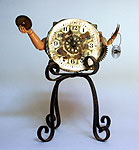 |
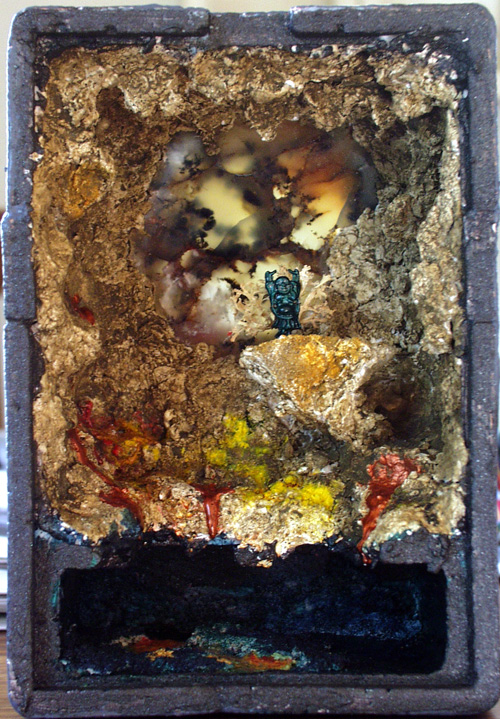 |
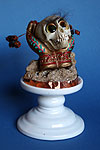 |
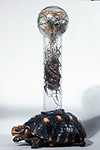 |
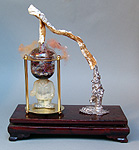 |
| Self-destroying Automaton |
Miniature Grotto |
Memento Mori | Burial Urn | Alchemy Apparatus |
 |
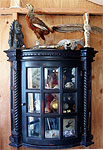 |
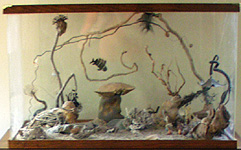 |
| Tabletop Wonder Cabinet |
Wall-mounted Curiosity Cabinet |
Parlor Aquarium |
| See also | |||
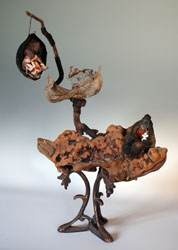 |
 |
 |
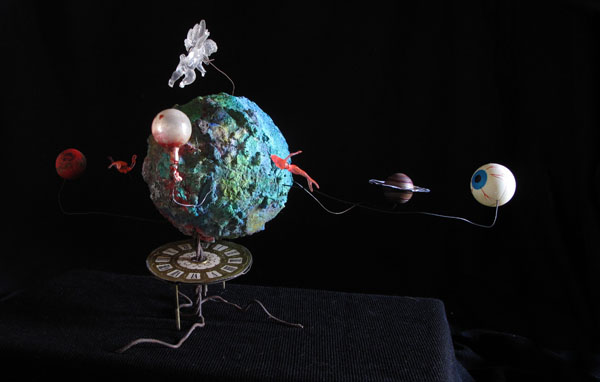
|
| Handstones | Views of the Zymoglyphic region |
Dioramas | Cosmography |
Self-destroying Automaton Automata and other mechanical marvels were of particular interest in this time because they occupied a mysterious gray area between life and death. Although clearly made of inanimate parts, they had some semblance of life. They offered the disturbing possibility that living creatures were at heart themselves merely mechanical devices. This particular mechanical wonder was a clockwork automaton that not only told time but continuously removed pieces of itself and offered them to passers by. How the internal parts were regenerated has yet to be determined despite intensive investigation by the museum staff. | |
Memento Mori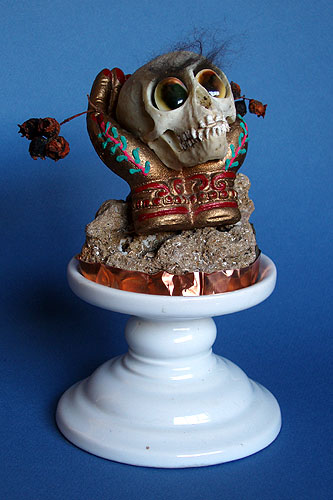  The coming of the Age of Wonder and its focus on the material world did not diminish the preoccupation with, and bafflement by, the universal sentence of death. A number of artifacts fall into the category of "memento mori," reminders that one’s time to enjoy the wonders of the world is limited. One is a grinning monkey skull resting on a florid base, reminding the viewer of the fleeting nature of life, the other a seahorse nestled within a small land mammal | |
Burial Urn  Another example of a "memento mori" is a symbolic burial urn, in which a transparent column rises out of a wandering turtle and contains the decaying remains of a mouse, swathed in wires and fur. | |
Alchemy Apparatus In the Rust Age, Zymoglyphic artisans were generally content with assembling various ritual objects from components that already had, for example, a prized patina of oxidation, or an air of rotted organic elegance. In the Age of Wonder, alchemists attempted to exert some control over the various natural processes that cause objects to become imbued with a poetic meaning, the very process that gives the culture its name. An apparatus such as this one could, given the right conditions, coalesce a sort of metallic sludge out of simulated thought processes and various bits of decomposing matter. The simulated thoughts are obtained by removing the head of a symbolic figurine and placing the remaining body where a fire would otherwise be burning. The space formerly filled by the head coincides with the position of the flask bulb; thus, the thoughts mingle with the decomposing matter. The resulting metal is a variant form of primordial ooze, still Zymoglyphic in style but resistant to further decay and corruption. | |
Miniature Grotto Water seeping over limestone creates natural sculptures; crystals form. Some grottoes have springs that are thought to be home to nymphs who provide life-sustaining water. Miniature grottoes are small dioramas that capture the spirit of the grotto, using various encrustations to mimic minerals and crystals. They were usually placed in windows, backlit by the Sun, to emphasize the details of the agate slab that usually formed their backdrop. | |
Tabletop Wonder Cabinet Eclectic collections of marvels were popular during the Age of Wonder. Crystals, shells, minerals, and marine life decorate this tabletop variety. The large crystal is rutilated quartz, a variety which is particularly prized because its inclusions form a microcosm of precipitous cliffs and chasms. The figure inside the cabinet is the generative source for the profusion of objects above. | |
Wall-mounted Curiosity Cabinet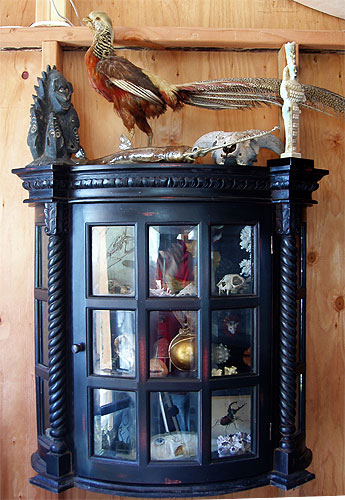 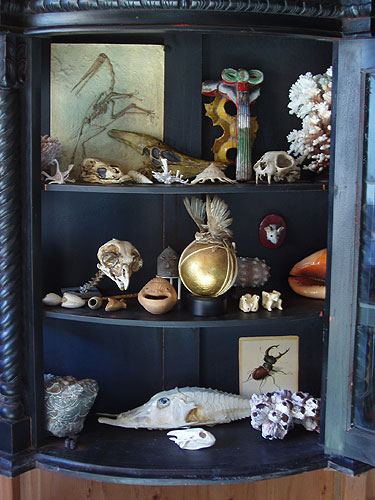 This is a Zymoglyphic curiosity cabinet constructed in the style of one that might have been seen during the Age of Wonder. It contains a typical assortment of antiquities, natural curiosities, art, and oddities. Some items are real and others are replicas. |
|
| Top: New Guinea figure, pheasant, sawfish, ram skull, Greek statuette of Artemis | |
| Top shelf: Various shells with protuberances, Pterodactyl fossil, duck skull, pterosaur skull, Chinese temple fragment, cat skull, coral | |
| Middle shelf: Owl skull, 17th-18th century clay pipes (found in the river Thames - donation of Sarah Brunner), clay bowl with face, Santeria figure (eleggua), golden orb with bound winged lizard, "Sputnik" sea urchin, erotic dice, mousealope, flaming helmet shell | |
| Bottom shelf: Rock with fossil shells, nautilus fish, turtle skull, barnacle cluster | |
Parlor Aquarium The parlor aquarium was a precursor to the dioramas that were so popular during the Age of Wonder. For more information on this particular one, see here | |